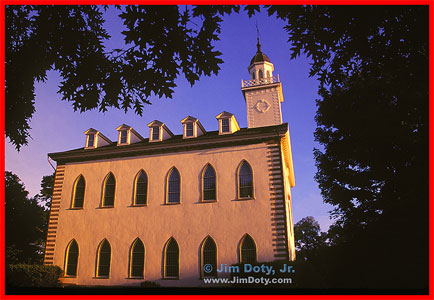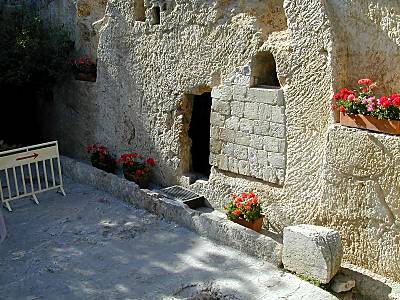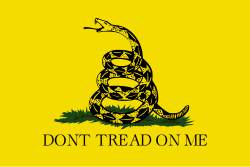Opening the Dispensation of the Fulness of Times - 3 April 1836


The record of Elijah's appearance is found in Doctrine and Covenants 110:13-16:
13 After this vision had closed, another great and glorious vision burst upon us; for Elijah the prophet, who was taken to heaven without tasting death, stood before us, and said:This was in specific fulfillment of prophecy (see Malachi 4:5-6; 3 Nephi 25; Doctrine and Covenants 2; Doctrine and Covenants 128:17; JS-H 1:33-39).
14 Behold, the time has fully come, which was spoken of by the mouth of Malachi—testifying that he [Elijah] should be sent, before the great and dreadful day of the Lord come—
15 To turn the hearts of the fathers to the children, and the children to the fathers, lest the whole earth be smitten with a curse—
16 Therefore, the keys of this dispensation are committed into your hands; and by this ye may know that the great and dreadful day of the Lord is near, even at the doors.
The day chosen for this event, the beginning of the dispensation of the fulness of times, was no coincidence. 3 April 1836 was Easter Sunday, the second day of Passover, the day of the presentation of the firstfruits of the harvest:

[H]ow often does Easter Sunday occur on both April 3 and 16 Nisan, as it did in A.D. 33? It happens less than once every century, on the average. The year 1836 was the only such occurrence in the nineteenth century.(Id.) LDS astronomer John Pratt has suggested the following connections:
This is the dispensation of the fulness of times. When did it begin? At the First Vision? At the organization of the Church? One clue to answering this question was provided by the Prophet Joseph Smith, who taught that the sealing power of Elijah has been given in every true dispensation of the gospel (D&C 128:9), and that it "is necessary in the ushering in of the dispensation of the fulness of times, which is now beginning to usher in." (D&C 128:18.)Read the whole thing.
Thus, apparently this dispensation could not have fully begun before 3 April 1836, when the keys of Elijah were restored. But by July 1837 the dispensation apparently was in progress, when the Lord called it "the dispensation of the fulness of times" and referred to "the keys of the dispensation" which had been restored. (D&C 112:30-32.) Finally, Elijah's own declaration seems to favor the significance of the 3 April 1836 date, for it was then that he declared, "The keys of this dispensation are committed into your hands." (D&C 110:16.)
But why would the bestowal of the keys of the dispensation of the fulness of times have been timed to coincide with a special anniversary of the Resurrection? One possible reason is that one use of the phrase "fulness of time" referred to the time when the law of Moses would be fulfilled. Lehi prophesied that "in the fulness of time he [the Redeemer] cometh to bring salvation unto men." (2 Ne. 2:3.) Paul clarified the meaning: "When the fulness of time was come, God sent forth his Son to redeem them that were under the law." (Gal. 4:4-5.) Thus, the "fulness of time" apparently referred to the time that man would be redeemed, which was completed at the resurrection of the Redeemer.
At his return, Elijah stated that "the time has fully come" for Malachi's prophecy to be fulfilled (D&C 110:14), suggesting that the prophecy of Elijah's return was to be fulfilled at a specified time. Perhaps he also implied that the time had fully come to begin the fulness of times.
Thus, on Sunday, 3 April 1836, apparently the time had fully come to open the dispensation of the fulness of times on a special anniversary of the fulness of time of the Resurrection.
4.2
Timing of the "Elijah Period."
As discussed earlier, the Prophet Joseph Smith taught that "the spirit of Elias is first, Elijah second, and Messiah last." This teaching suggests three distinct periods in Church history.
Perhaps 3 April 1836 can be thought of as the close of the "Elias period" or preparatory phase of Church history, when finally all the forerunners had restored their keys in the spirit of Elias. (See D&C 27:5-13; 128:20-21.) This period could have been closed when Elias himself, perhaps the same Elias who holds the keys of the restoration of all things (D&C 27:6), returned immediately before Elijah.
Then the next period could have commenced with the long-awaited advent of Elijah's return. The Church would then enter into an era of temple work and building up the kingdom, having had all of preparatory keys restored. The "Elijah period" would then end with the coming of the great day of the Lord.
On Sunday, 27 March A.D. 33, the body of Jesus was anointed ("dedicated"?) for burial. (John 12:1-7.) Similarly, the Kirtland Temple was dedicated on Sunday, 27 March 1836. (D&C 109.) Moreover, during the week following both of these dedications, the ordinance of the washing of feet was introduced and the sacrament of the Lord's supper was observed. (See History of the Church, 2:410-40.) . . .
The organization of the Lord's church in the latter days occurred on 6 April 1830. Apparently, this "birth" of the ecclesiastical "body of Christ" occurred on the anniversary of the birth of his physical body, 6 April 1 B.C. Thus, a correspondence is suggested between the birth of the Savior and the birth of his church.
It is proposed that on Easter Sunday, 16 Nisan, 3 April A.D. 33, the physical body of Christ was restored, clothed with a fulness of power and glory. (See Alma 40:23.) On Easter Sunday, 16 Nisan, 3 April A.D. 1836, the ecclesiastical body of Christ was restored, clothed with a fulness of priesthood authority. Thus, a correspondence is suggested between the restoration of the body of the Savior to a fulness of power and the restoration of the body of the Church to the fulness of the Melchizedek Priesthood.






0 Comments:
Post a Comment
<< Home